
When my daughter was younger, decorating at Easter consisted of me boiling a few eggs and letting my kiddo cover them with stickers, or paint them with washable watercolours. Later on, I broke out the glue and tissue paper. More recently, we've been experimenting with traditional dye baths, which are the most fun because when else can you stick your hands into multiple containers filled with colourful concoctions?
![]() RELATED: All Natural Easter Egg Dyes for Kids
RELATED: All Natural Easter Egg Dyes for Kids
It's easier than you might think to decorate Easter eggs with your kids. And if you're really concerned about the mess, just grab a dollar store tablecloth or some newspapers and cover the heck out of your work area. Or - if it's mild enough in your part of the world - take the materials outside. Because, kids.
First...
BOIL THE EGGS
Boil some eggs until they are hard (place eggs in boiling water for about 8-10 minutes). Or - if you want to save the eggs - blow them out instead (find out how to do that here).
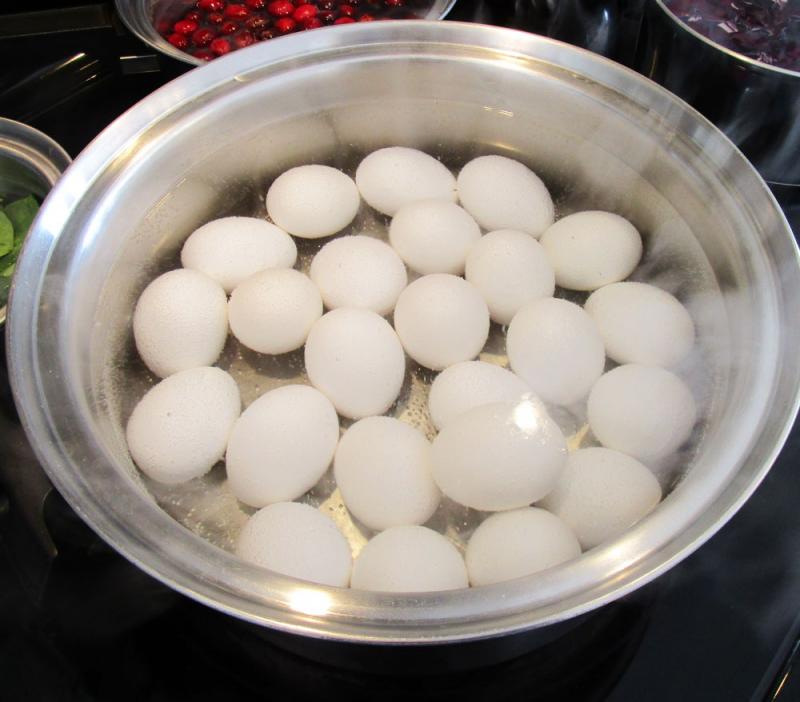
Then...
MAKE THE DYE
This part is super easy. All you need to do is combine the following ingredients in a container and let the mixture cool.
 1 cup hot water. I used boiling water from the kettle.
1 cup hot water. I used boiling water from the kettle. 1 teaspoon vinegar. A little more is fine. So is a little less.
1 teaspoon vinegar. A little more is fine. So is a little less. 10 to 20 drops food colouring. The more you squeeze, the more intense the shade.
10 to 20 drops food colouring. The more you squeeze, the more intense the shade.
Note: If you would rather not use food colouring, check out my all-natural Easter egg dye recipes using cabbage, coffee, turmeric and other ingestible items.
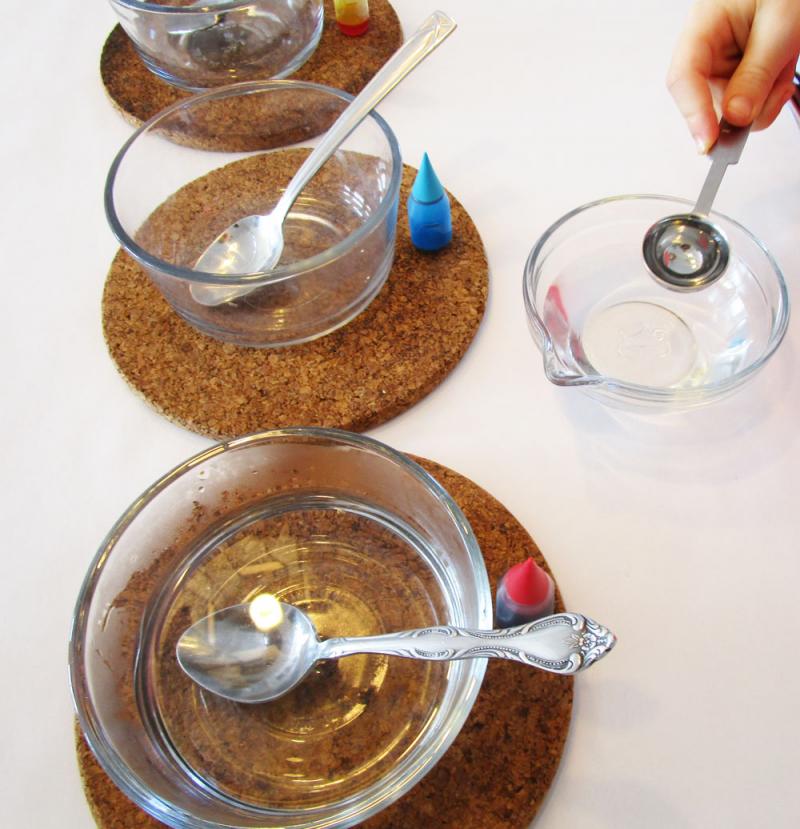
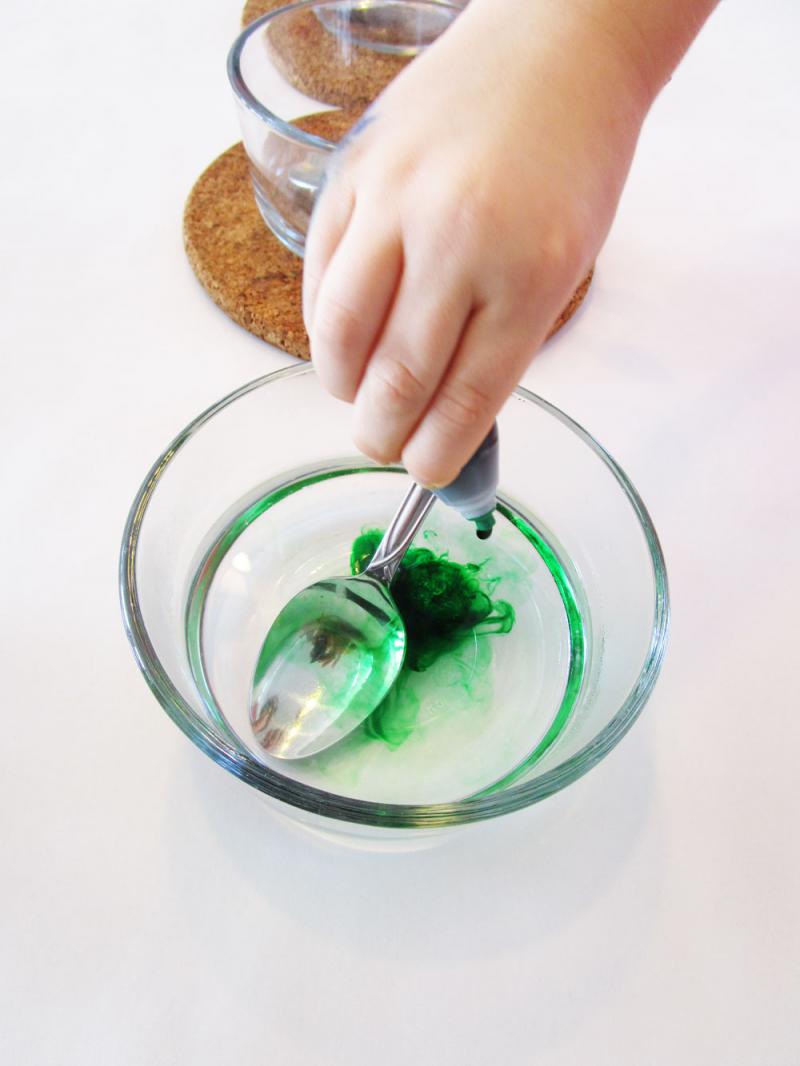
Now it's time to dip!
You can dip once. You can dip twice. You can double dip. You can do a half and half dip. What I'm saying here is that there are no rules.
But, if you want to get fancy, here are three ways to kick things up a notch.
The concept here is simple. Start by making designs on an egg using wax crayons. Then, dip the egg into the dye. That's all there is to it!
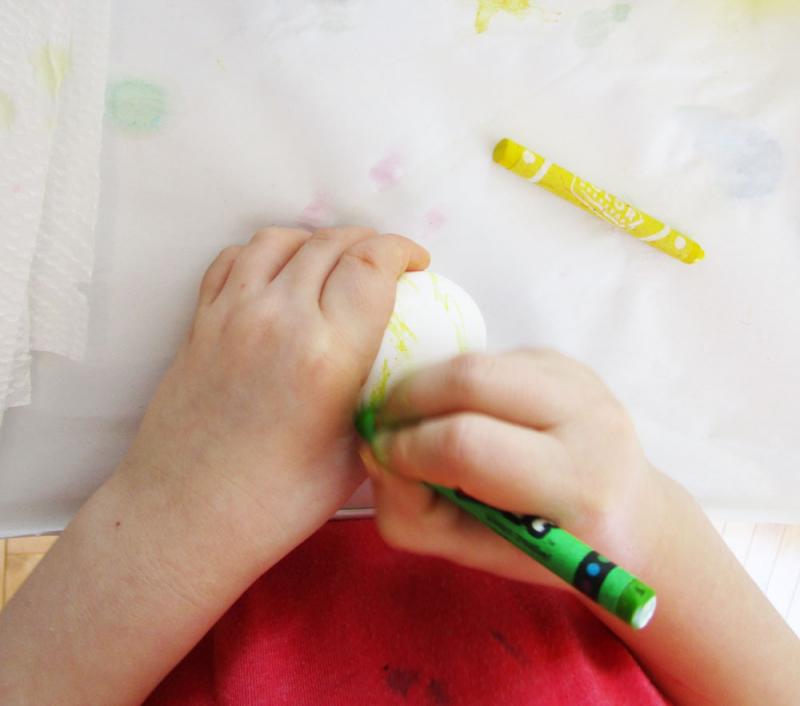

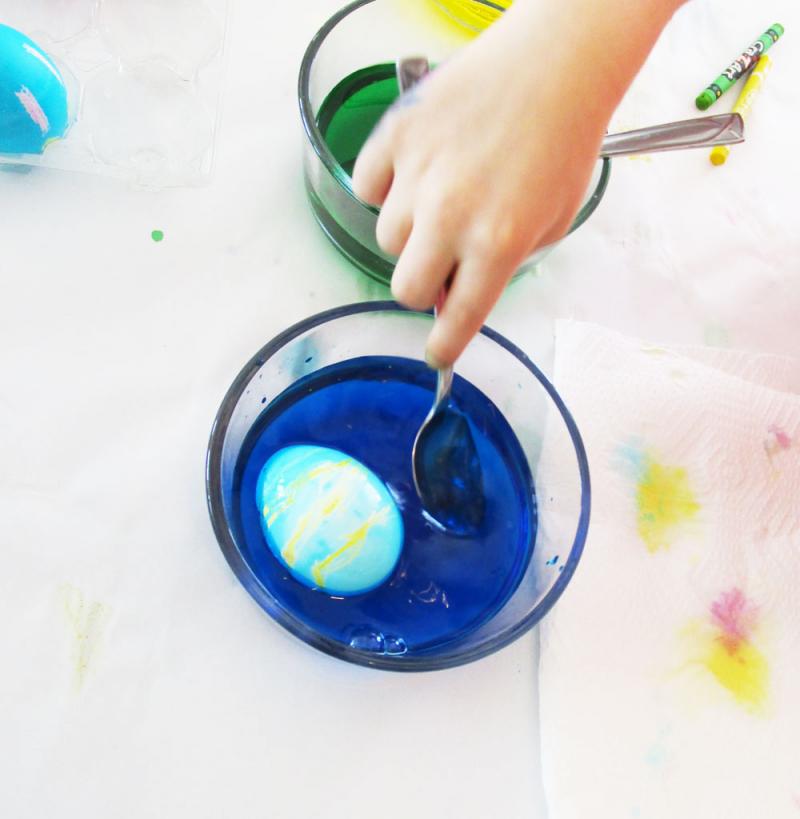

To make these funky eggs, start by placing pieces of masking tape randomly on an egg, leaving some areas exposed. If you want to get super fancy, you can cut designs out of the tape using an X-Acto blade. Because my daughter is six, we just tore bits of tape off the roll and stuck them onto the egg.
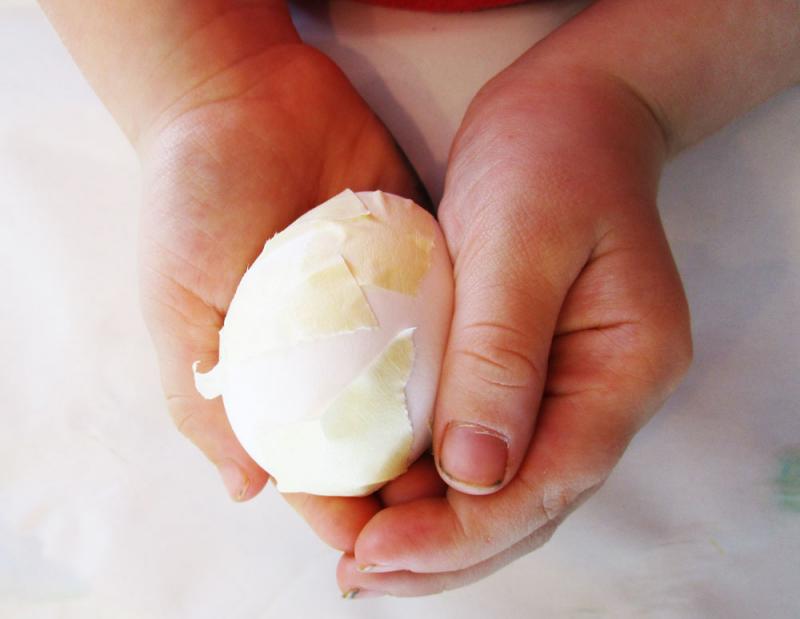
Dip the egg into a dye bath.
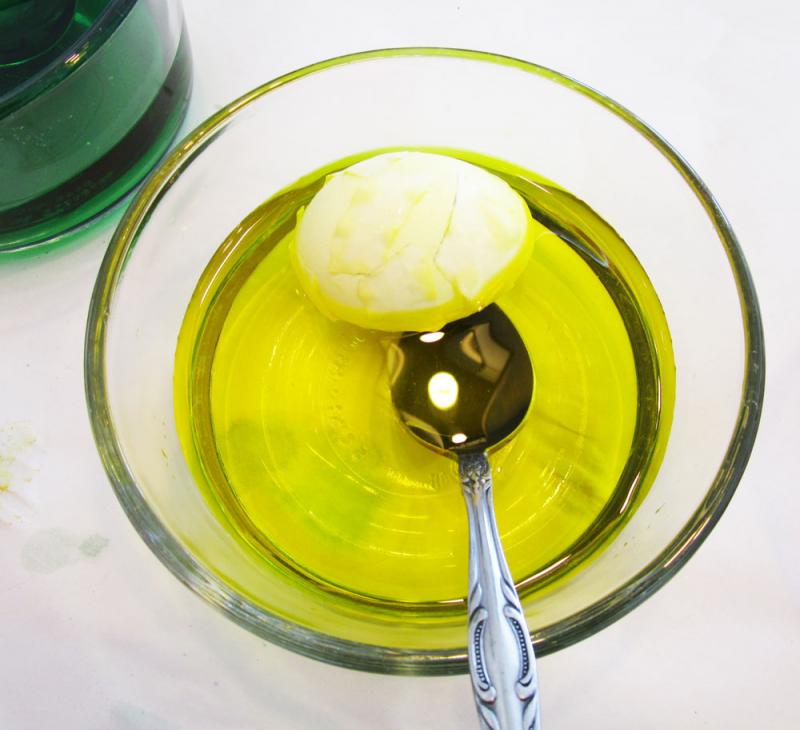
Remove the egg, let it dry and peel away the tape.
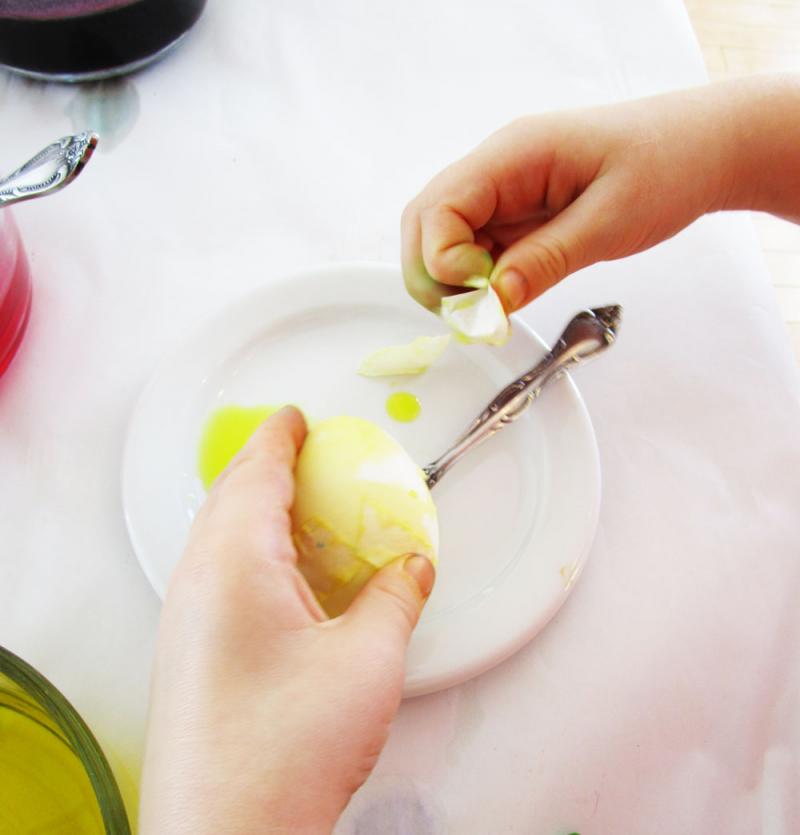
Add more tape and dip into a second colour.
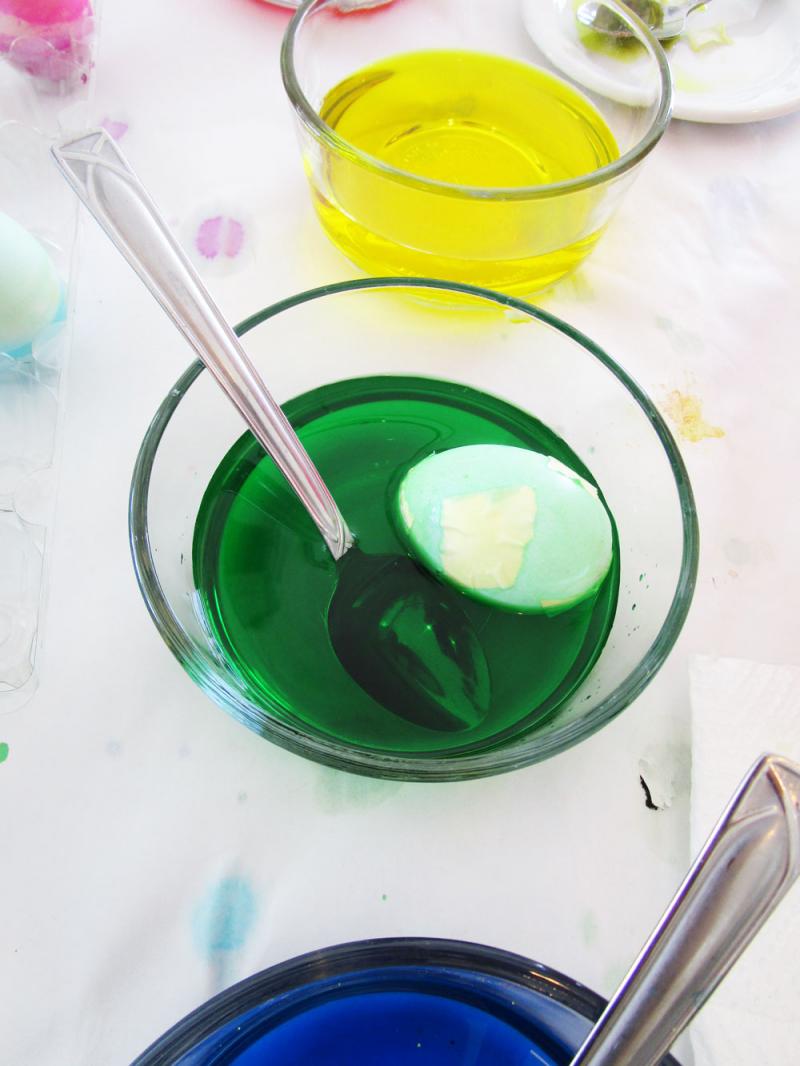
Again, let the egg dry and remove the tape.
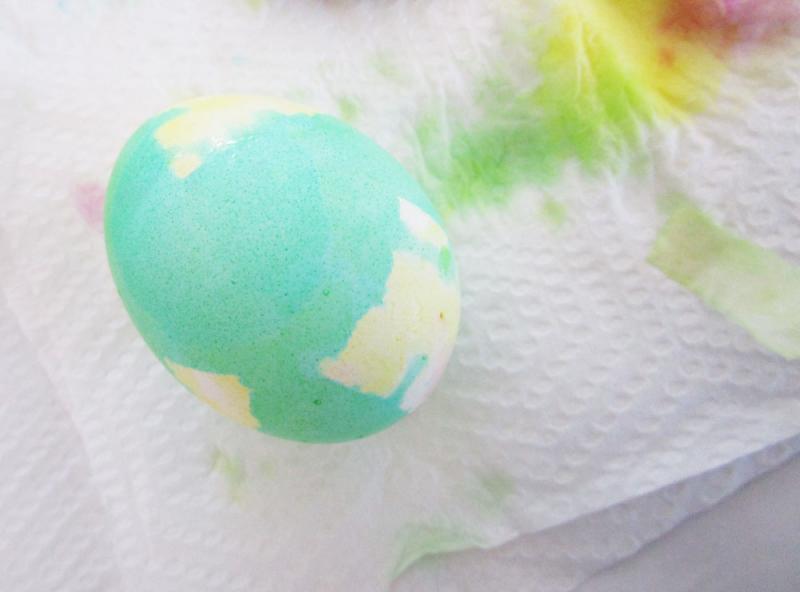
And... repeat.
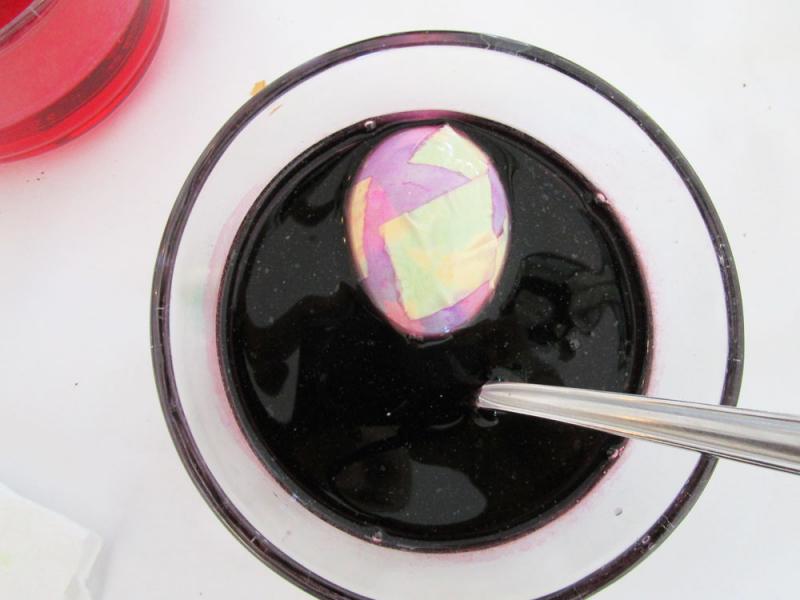
Continue until you are happy with the results.
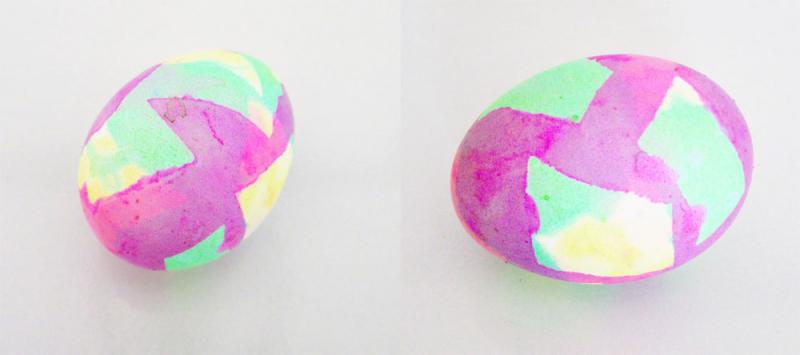
This technique is best left until you are finished decorating since you will be adding 1 tablespoon of olive oil to your dye baths. The oil will cause the egg to repel some of the colour as you dip, thus creating a marble effect. You can begin with a blank egg (which is what my daughter and I did), or you can start by dipping the egg in an oil-free dye bath to achieve a base colour. Dip the egg into a couple of different colours to see what you end up with.
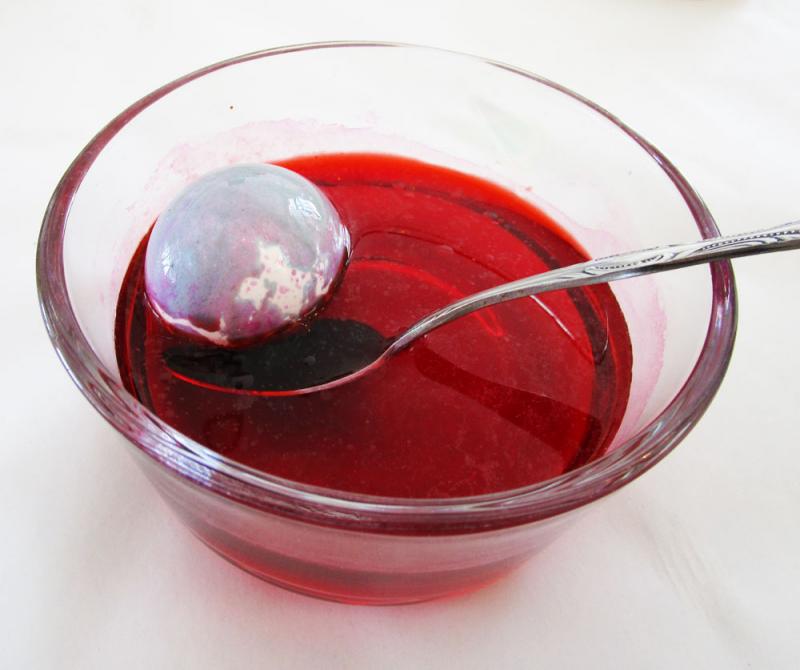
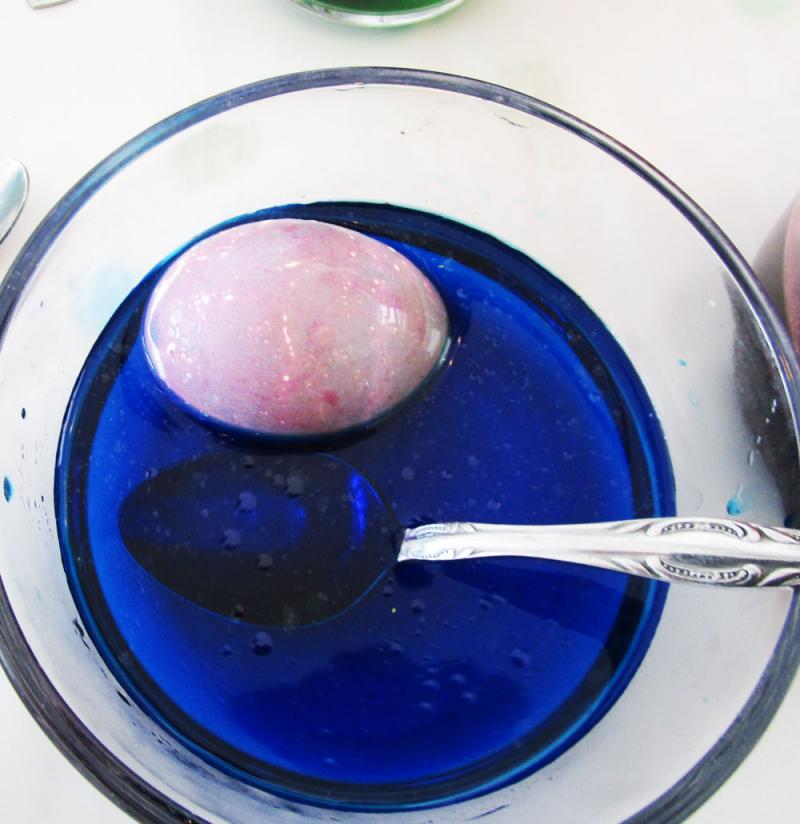
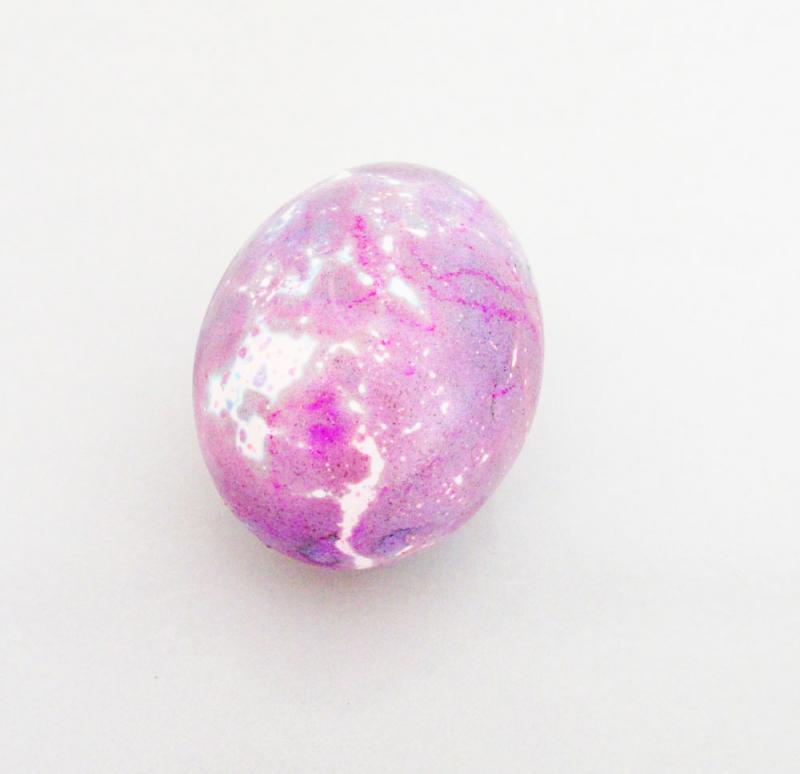
If you are looking for more Easter decorating ideas, don't miss this terrific round up from our YMC bloggers.

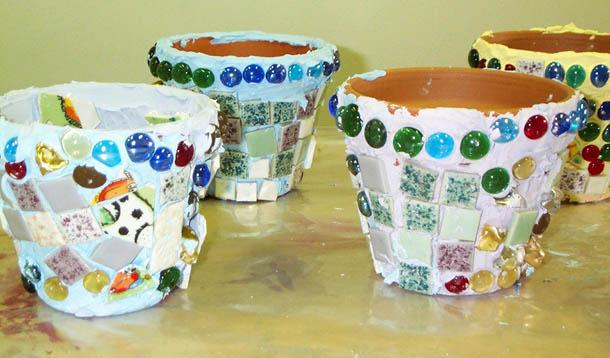
Whether you're thinking about starting seeds for an outdoor garden, a mini-garden for your window ledge, or a container garden for your patio, you will need lots (and lots) of pots. And while it's true that you could use containers you pick up - as is - from the garden centre, decorating and personalizing your own vessels can be so much more rewarding. And fun... especially for children.
![]() Top 5 Best Pot Garden Vegetables
Top 5 Best Pot Garden Vegetables
To get started, simply gather terra cotta pots, a small container of drywall compound*, some glass gems from the dollar store, seashells, beach glass and/or broken dishes. (If you are going to use broken dishes, safely smash them into smaller pieces by placing them in a plastic grocery bag, wrapping them in an old towel and whacking the heck out of them with a hammer (while wearing safety glasses). If the edges are sharp, sand them down with a medium grit sandpaper.)

Begin by slathering a thick layer of drywall compound onto the pot with a craft stick. Do this one small section (half the pot at the most) at a time rather than covering the entire surface at once. This is so easy, kids can do it on their own without much supervision. (Note: You can colour the drywall compound by mixing it with some tempera paint. Some may be concerned with kids using drywall compound while crafting. However, since you won't be sanding the compound once dry, no dust will be inhaled and so it is perfectly safe, as long as kids don't consume the product! Also, when I say drywall compound, I don't mean Polyfilla (it dries too quickly) I mean wallboard joint compound.)
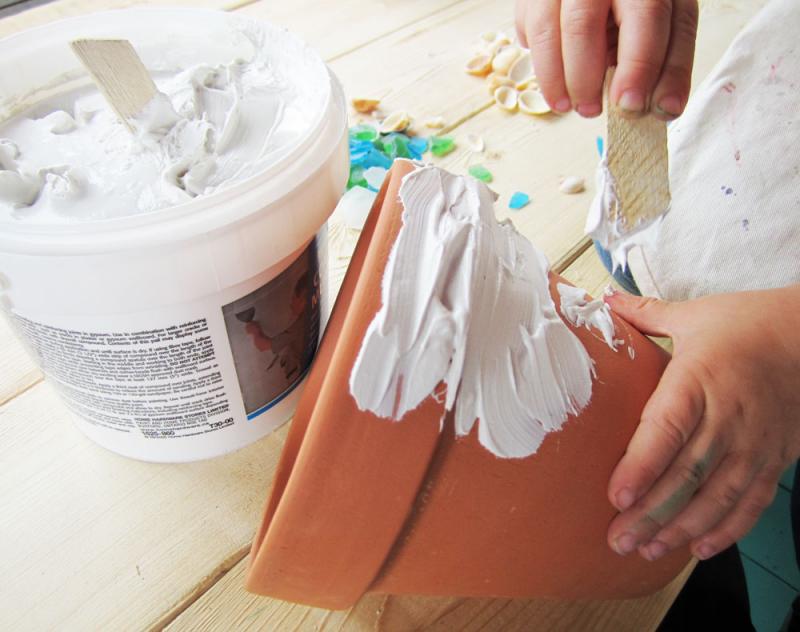
Then, start sticking the shells, beach glass, gems, etc. into the wet compound.
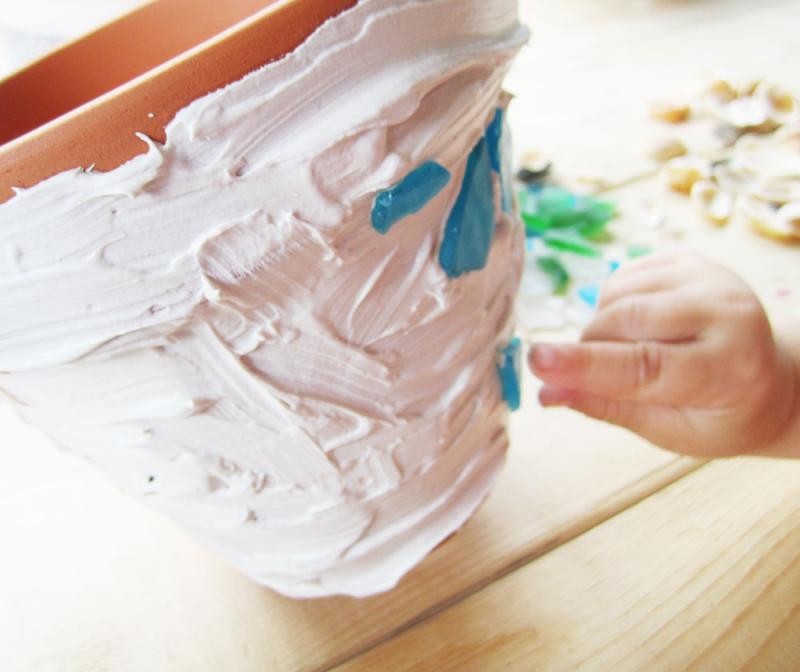

Continue until the pot is full of decorations.
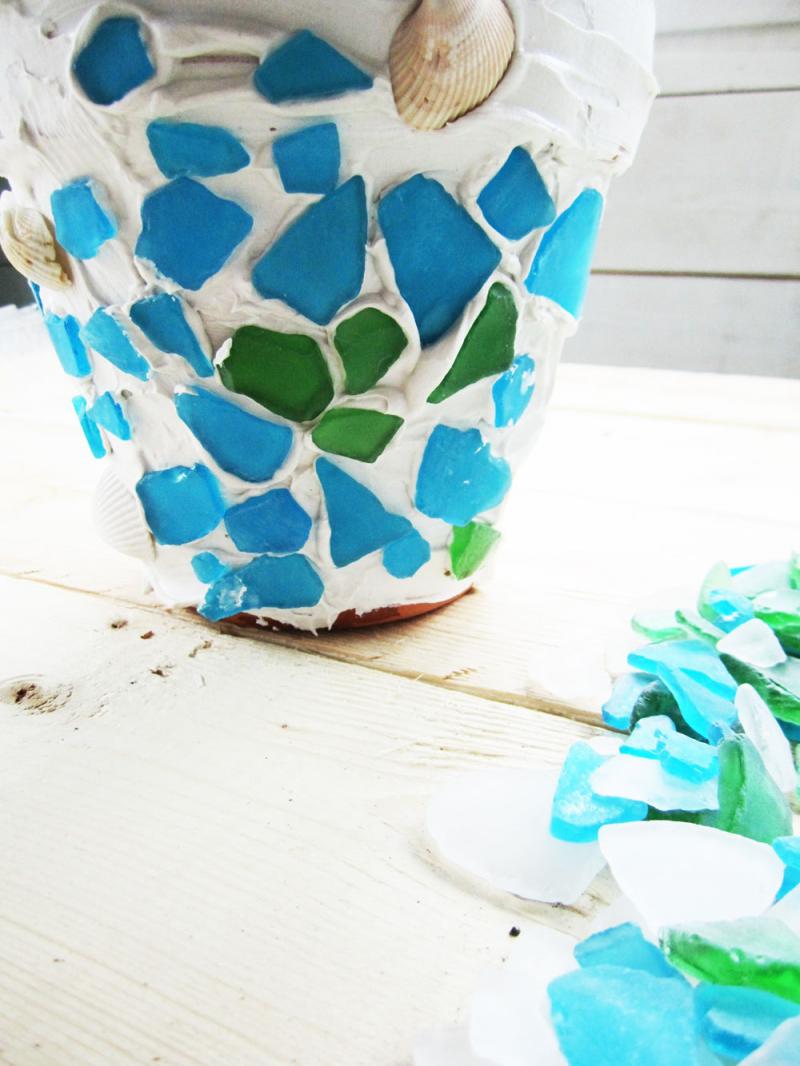
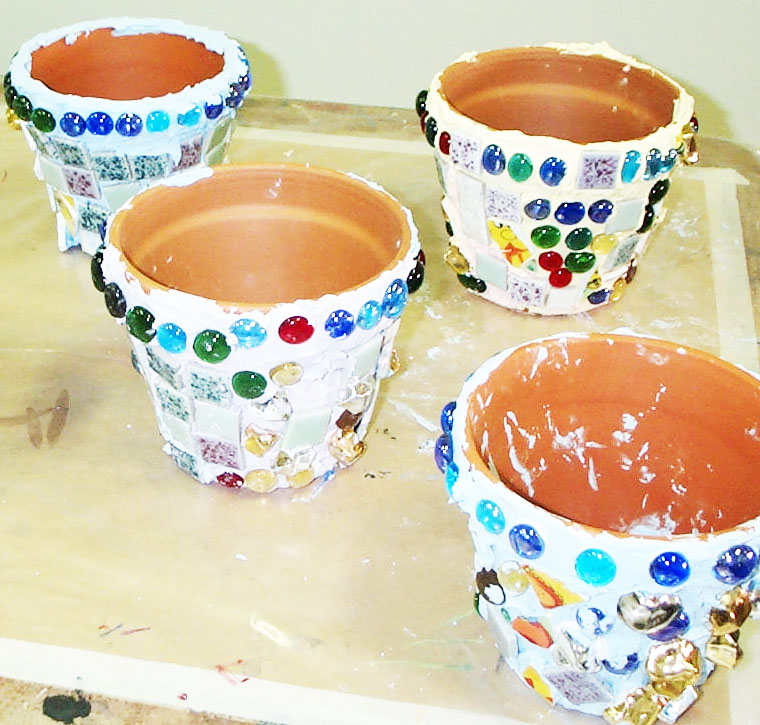
Let everything dry and that's all there is to it! Talk about a great activity for kids.
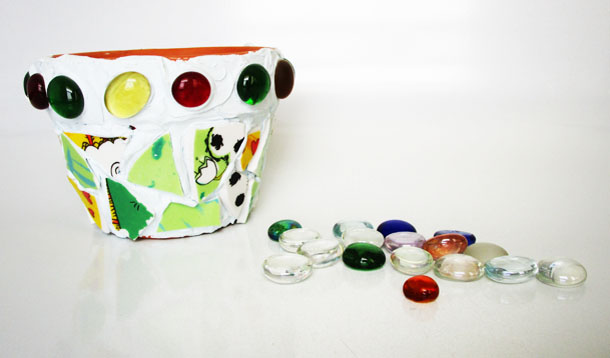
Now, about those seeds...
But before I begin, I have a confession to make.
I am not a gardener.
As a result, any and all plants that survive in my presence do so in spite of my efforts, not because of them.
I come from a long line of plant killers. I clearly remember the twisted pile of gnarled Chrysanthemum roots stacked up in the corner of our backyard. It was in this spot that Mother’s Day gifts went to die. Without dignity. Years later, I discovered that in order to keep houseplants alive, you need to place them in sunlight. And give them water.
Like I said, I am not a gardener.
So it was with a giant leap of faith that I procured some vegetable seeds and decided to experiment with germination in an effort to teach my daughter how plants grow.
Those who know these things, know that a wide variety of containers can be used for starting seeds (everything from coffee cups to eggshells). I however, took my mother's advice and cheated. In other words, I let her buy us a kit, which consisted of starter soil, a shallow tray, a domed lid, a bunch of little coconut husk cells and step-by-step INSTRUCTIONS.
To begin with, we tossed some soil in a bowl and added a bunch of water to make it damp, but not dripping. Then, we loosely filled the cells to about half. We did this because the instructions said we should.
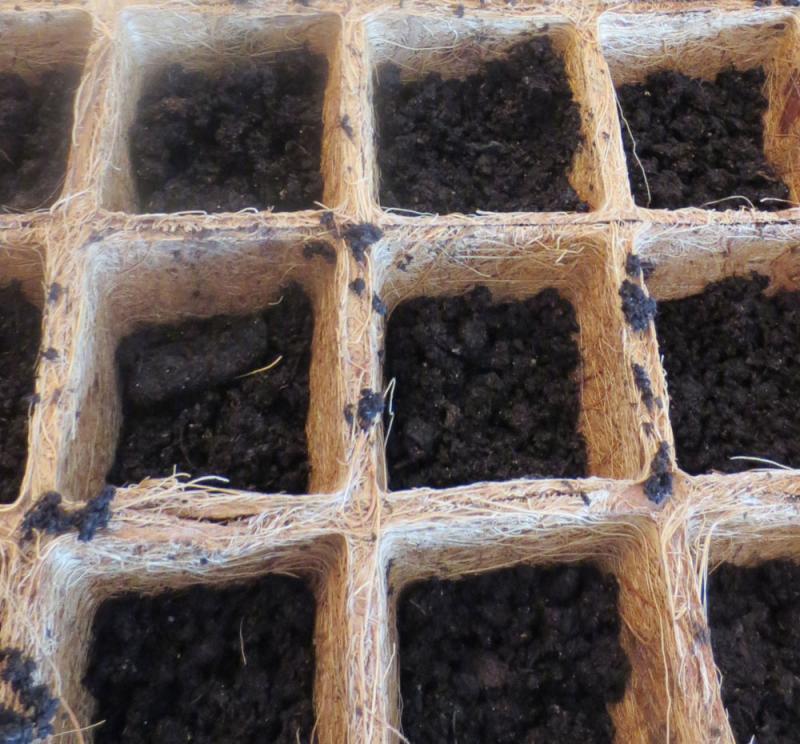
Next, we placed some seeds (no more than 2 per cell) on top of the soil. We also added some craft stick markers (one per row) so we knew what we were growing. Just in case anything actually started to sprout. Had I been feeling less anxious about the process, we may or may not have decorated those craft sticks with paint.
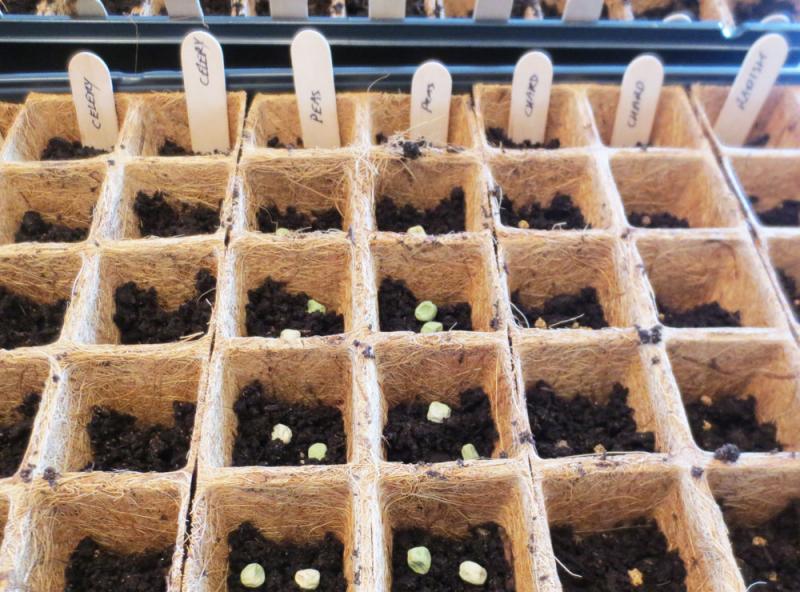
Then we covered the seeds with more damp - yet fluffy - dirt.
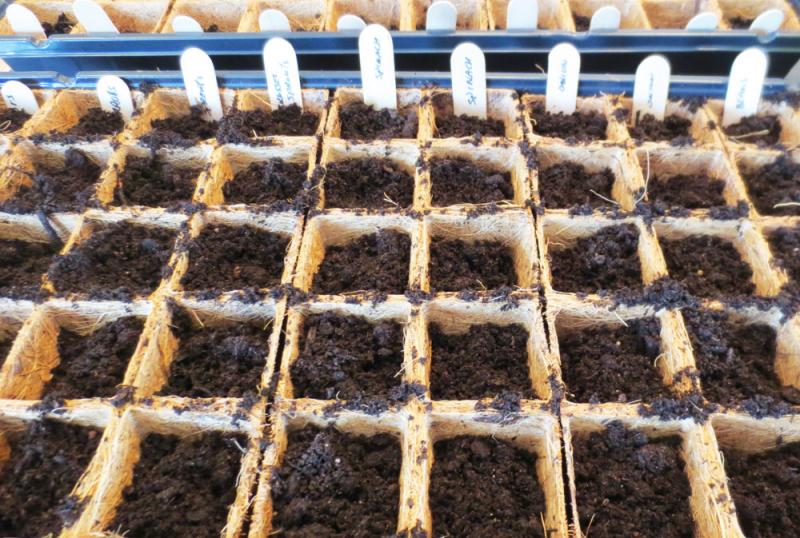
After that, we put the trays on a shelf in the sun and covered them with the clear dome. Over the next number of days, my daughter watered the soil whenever it felt dry and what happened next was nothing short of a miracle.
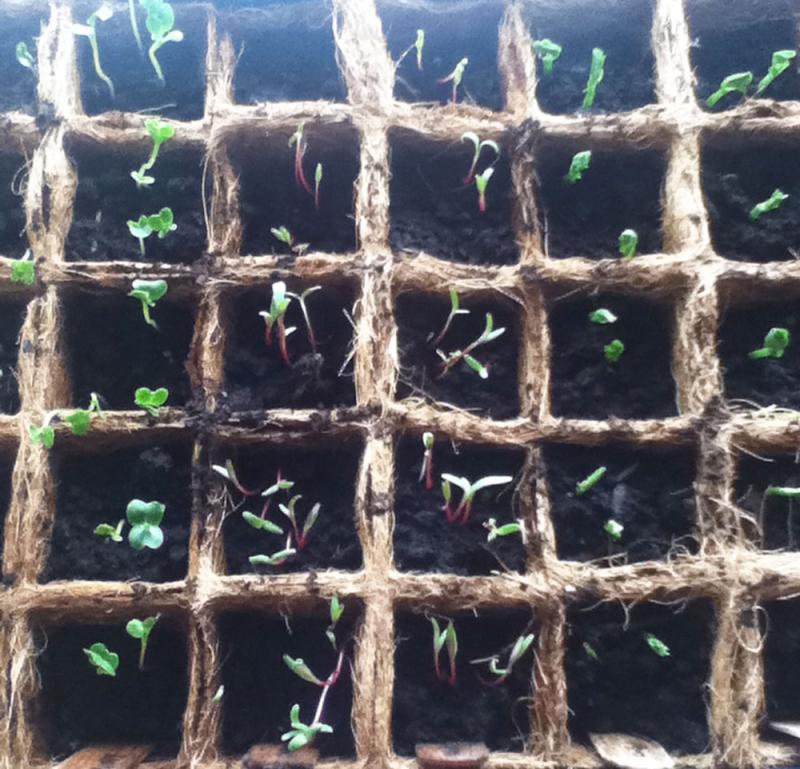
Once we saw green, we removed the dome and just let those little suckers keep growing. In the sun. Adding water when the soil felt dry. Nature is amazing.
Truth be known, once the plants were poking out of the abyss, I really didn't know what to do with them. I mean, theoretically I knew they could be moved - into the ground in an outdoor garden, or inside in one of our mosaic pots. But again... not a gardener. But with the help of those with thumbs far greener than mine, I discovered that all you need to do is to put some moist potting soil into a pot, carefully move the seedling into the new container and cover the roots with more dirt. There might be more to this but truthfully, I'm still too busy riding high on my germination success to care.
But, if you are serious about gardening, here are some fabulous (and funny) resources from the YummyMummyClub experts:
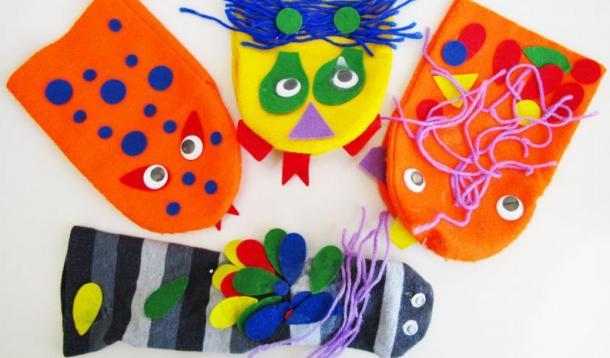
Let's face it, sometimes you just need a break. And when you do, it's nice to have some ideas up your sleeve that don't involve a lot of prep work.
Here are five creative arts and crafts activities kids can do on their own (depending on age, of course). Best of all, the materials are inexpensive and easily accessible. In fact, most can be found at your neighbourhood dollar store.
![]() 20 Winter Activities Kids Can Do Without Parents
20 Winter Activities Kids Can Do Without Parents
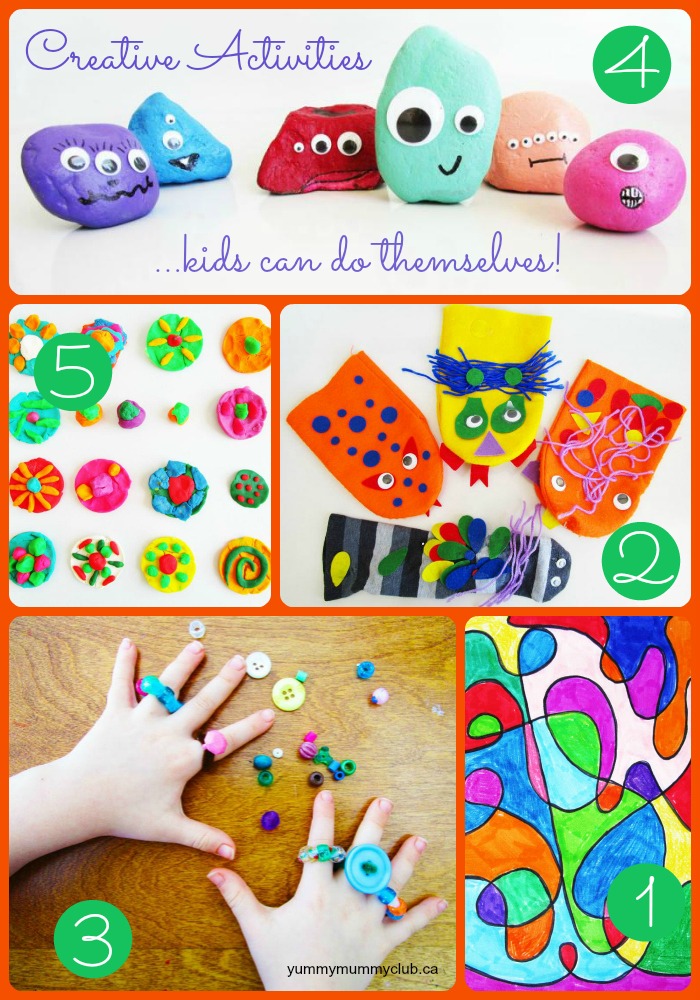
Paper and drawing materials (markers, pencil crayons, crayons) are all you need for this activity where kids simply draw some lines with a marker on paper and then fill in the blank spaces with colours. Or, kids can take it one step further and find hidden monsters and critters in their drawings. Doodling is great because you never know what might develop.



It always amazes me how much kids (even older kids) LOVE making puppets, putting on puppet shows and talking to puppets. Creating hand puppets like these ones is easy. All you need are some bits of felt and yarn, scissors, googly eyes and glue. There are lots of kits out there that make crafting puppets super easy (like this one featuring felt puppet blanks and all the supplies needed - from Discount School Supply) or you can gather the supplies on your own and let your kids use odd socks.

I have yet to meet a kid who doesn't love beads. Boys, girls, young, old... it doesn't matter. They all adore them. If you give a kid a container of beads and some yarn or pipe cleaners, they will automatically start stringing. It's like magic. They key is to set out a variety of beads, rather than just one little bag. Grab a shallow plastic (lidded) container and fill it with beads you find at the craft store or dollar store. Your work is now done.



To make rock monsters you will need rocks, googly eyes, paint and glue. If the thought of paint makes you nervous, stick to markers instead. You can also provide your kids with some bits of yarn and other crafty items to glue on their rocks.
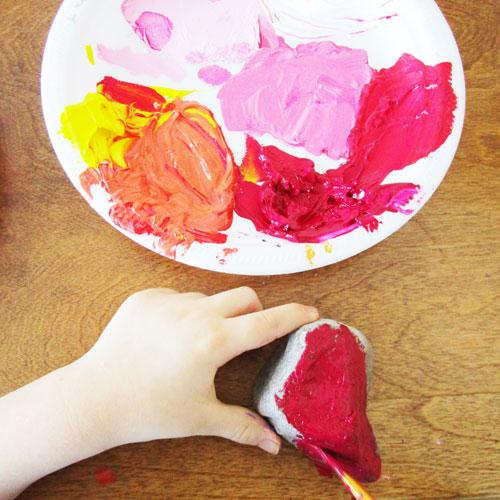
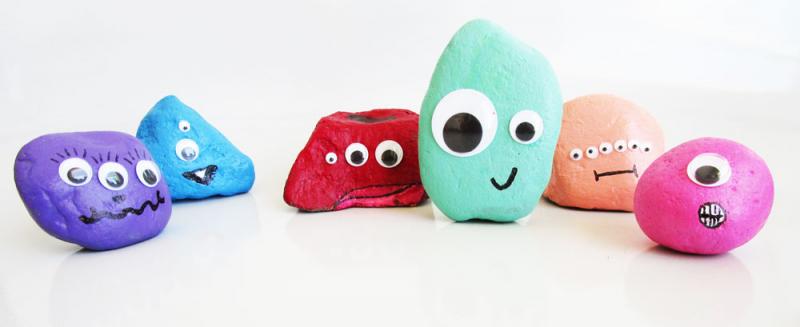
Whether you buy Play-Doh from the store or make your own play dough at home, kids will have hours of fun shaping it into blobs, flowers, fruit, pizzas, or whatever comes to mind. Now I know what you're thinking, Play Doh is the devil's work. And you might be right. It can be messy and is a real pain to get out of clothing (and off of bare feet!). But, I have a solution. Throw an old sheet (or tablecloth, or shower curtain) on your table before bringing out the supplies. When kids are finished creating, gather the corners of the sheet, haul it outside and shake off the tiny bits before they have a chance to infiltrate the entire house. Also, homemade dough (find recipe at the bottom of this post) is MUCH easier to clean up than the store bought stuff (and it's biodegradable). Or, you can try Model Magic for a spongy, won't-stick-to-anything-but-itself modeling material.
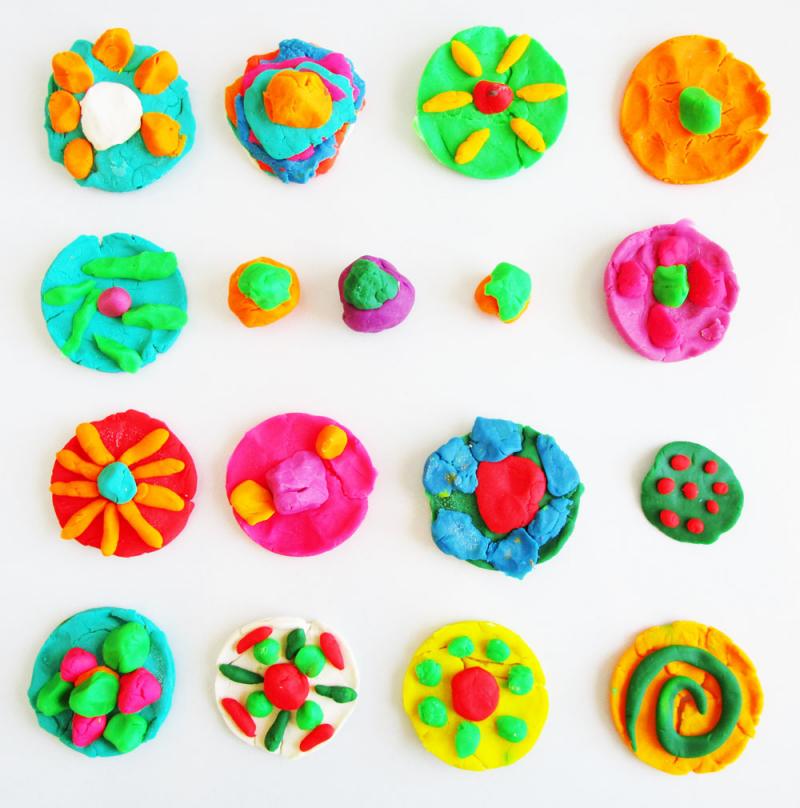
Pour 1 cup of water and a few drops of food colouring into a pot on the stove.
Heat to boiling and add 1/2 cup of salt. Stir until the salt has dissolved.
Remove from heat and add 1 cup of flour, 1 tablespoon of vegetable oil and 1 tablespoon of cream of tartar.
Mix, first with a wooden spoon and then (as the mixture cools) knead it with your hands.
Repeat with different colours, or cut the recipe in half or in thirds to make smaller amounts of different coloured play dough.
Note: Because you add the food colouring to the water, it should not stain your hands when you mix in the flour.